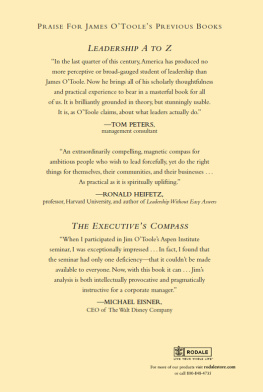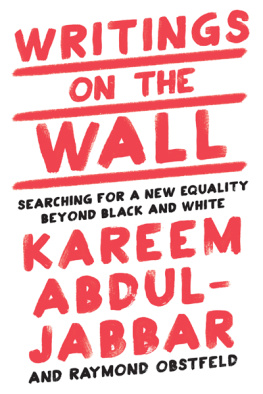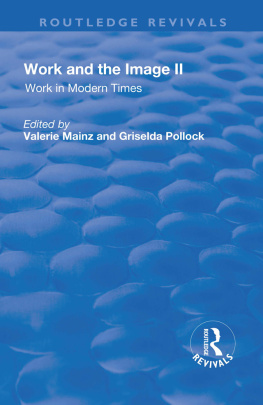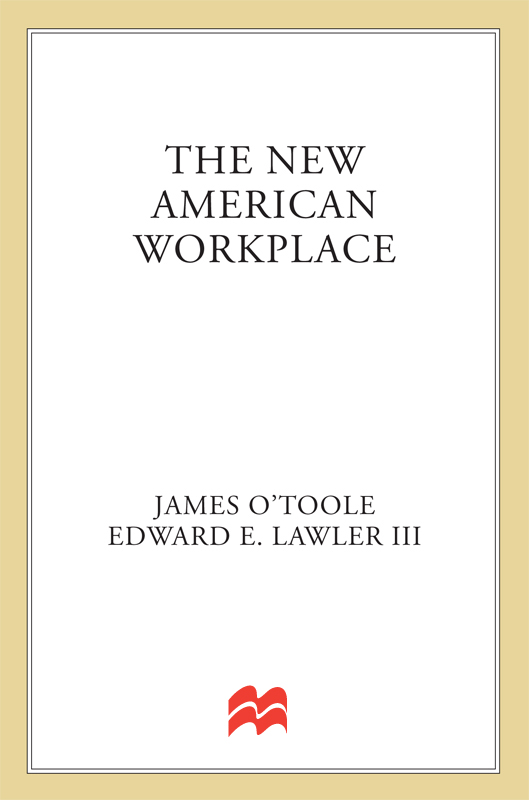Contents
Guide

The author and publisher have provided this e-book to you for your personal use only. You may not make this e-book publicly available in any way. Copyright infringement is against the law. If you believe the copy of this e-book you are reading infringes on the authors copyright, please notify the publisher at: us.macmillanusa.com/piracy.
CONTENTS
We are indebted to a number of individuals and organizations who supported the research and writing of this book. The Society for Human Resource Management provided major financial support for our research. SHRM also conducted surveys and focus groups of its members for the project. Debra Cohen of SHRM provided substantive advice, wisdom, and invaluable aid in managing our relationship with SHRM. We are grateful to the organizations CEO, Susan Meisinger, for allowing us a free hand to pursue our research interests and to state our views in the book, which do not necessarily reflect those of SHRM.
The corporate sponsors of the Center for Effective Organizations also provided financial support as well as research data. Their continuing support makes it possible for CEOs professional staff to do organizational research that influences both theory and practice.
We appreciate the contributions of the members of our New American Workplace advisory task forceJohn Boudreau, Susan Cohen, Debra Cohen, David Finegold, Alec Levenson, Susan Mohrmanfor helping us to structure our research and to identify authors of the papers commissioned for the study. The authors of those contributed papers, whose names and affiliations are listed separately, provided us with important material that has allowed us to ground our findings in solid research. We thank them all.
We also owe special thanks to the staff members of the Center who helped us with data gathering and analysis and manuscript preparation: Dan Canning, Arienne McCracken, Alice Yee Mark, Beth Neilson, Nora Osganian, and Anjelica Wright.
We wish to acknowledge the help and support of Jim Levine, our literary agent, and that of the editorial and marketing team of Palgrave Macmillan, under the leadership of Aire Stuart. Robert Schrank deserves a tip of the hat for his years of pestering us to take a fresh look at Work in America.
Finally, we wish to recognize the courageous contribution made by the late Elliot L. Richardson when, in 1972, as Secretary of Health, Education and Welfare, he commissioned a task force of scholars to prepare an objective report on the conditions of Work in America, which he then released with his commendation. Sadly, he and too many members of that task force will not see the publication of this book, which we dedicate to him and to themElizabeth Hansot, William R. Herman, Neal Herrick, Elliot Liebow, Bruce Lusignan, Harold Richman, Harold Sheppard, Ben Stephansky, and James Wrightboth the living and those no longer with us.
President and CEO
Society for Human Resource Management
In the 1970s, Louis Studs Terkel, the Chicago radio broadcaster, oral historian, journalist, and author interviewed more than 130 working American men and women of different ethnicities and ages and captured their voices for his book Working, about the realities of employment in America. Published in 1974, the award-winning work carried the subtitle: People Talk about What They Do All Day and How They Feel about What They Do.
While immensely popular, Terkels book was based on a less comprehensive study than another, more formal, examination of the nations working conditions, Work in America, which was conducted in 19721973 by a task force formed by U.S. Secretary of Health, Education and Welfare, Elliot L. Richardson. The task forces chairman, James OToole, was the principal author of the survey report and, not coincidentally, is also the coauthor, with Edward Lawler, of this publication, The New American Workplace. Since the study documented in this book employed the same methodology as the earlier study, the current work can be viewed as a fresh take on that government-sponsored effort.
Some might argue that its superfluous to point out that working conditions have changed in the three decades since Studs Terkels Working and the Work in America report. After all, even a casual look at Americas workplaces today reveals that the working environment has been radically transformed, and the very nature of work itself and the character of the social contract between employer and worker have been irrevocably altered. But there is more to the story than these dramatic changes.
Jim OToole and Ed Lawler have produced a compelling and comprehensive account thatin addition to chronicling U.S. workplace changesexamines the factors underlying these developments, details their impact on workers, and explores future workplace scenarios for both workers and the organizations that employ them. And in keeping with the spirit of Terkels book and Work in America, considerable ink is devoted to the values, attitudes, needs, and expectations of workers themselves.
Even though American workplaces have evolved in ways unforeseen at the time of the Work in America study, readers of The New American Workplace will draw at least one conclusion that remains unchanged from the earlier study: Satisfying work is a basic human need that establishes individual identity and self-respect and lends order to life.
While this publication discusses the growing importance of people strategies and argues for progressive HR management practices, this book is fundamentally about business and OToole and Lawler have exhaustively covered the business-relevant aspects of workplace issues in present-day America. For that reason alone, this book should be required reading for every business professional.
More and more, we are seeing and hearing references to human capital in essays, op-eds, columns, and business seminars. SHRM has been driving this bandwagon for years, and now others are climbing aboard. We believe its impossible to overstate the importance of human capital in todays global economypeople really are organizations most important asset, and effective human resource management is critical to organizational success.
Studies such as The New American Workplace can help organizations and their HR professionals effectively manage their human capital by identifying and analyzing the critical workplace issues that impact performance. Given the importance of these findings to the work of the human resource profession, and to overall organizational success, this up-to-date picture of the American workplace is much-needed and extremely practical. I think Studs Terkel would agree.
Congratulations to Jim and Ed for a job well done, and a sincere thank you from all of us who toil in the field of human resource management.
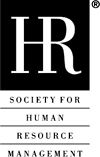
HR: Leading People, Leading Organizations
The research for this book was supported by a grant from the Society for Human Resource Management.
The Society for Human Resource Management (SHRM) is the worlds largest association devoted to human resource management. Representing more than 200,000 individual members, the Societys mission is to serve the needs of HR professionals by providing the most essential and comprehensive resources available. As an influential voice, the Societys mission is also to advance the human resource profession to ensure that HR is recognized as an essential partner in developing and executing organizational strategy. Founded in 1948, SHRM currently has more than 550 affiliated chapters and members in more than 100 countries. Visit SHRM Online at www.shrm.org.


